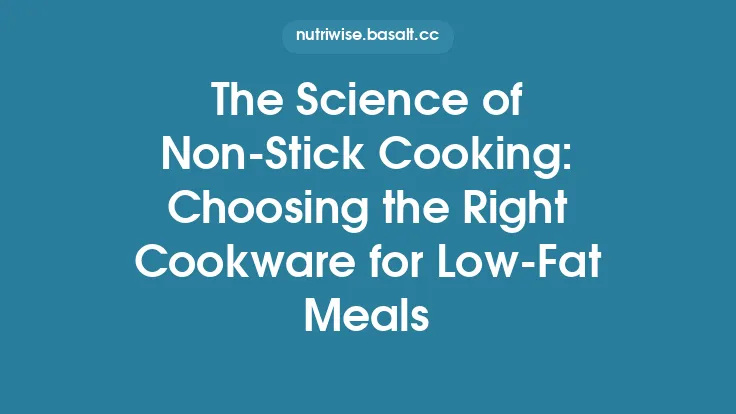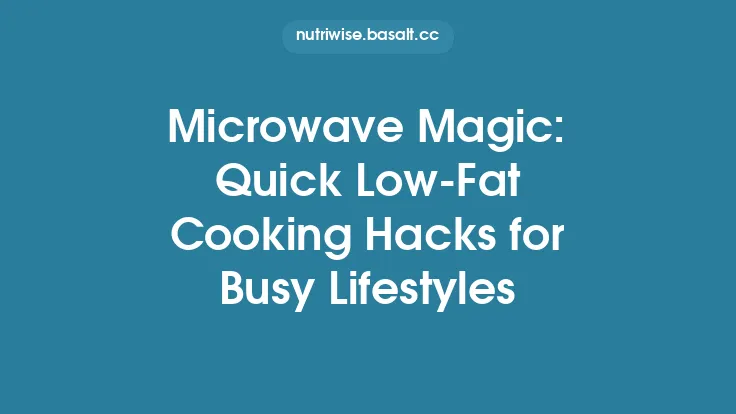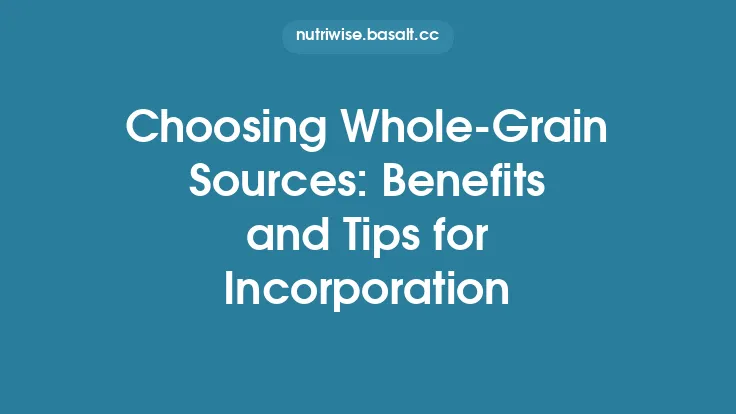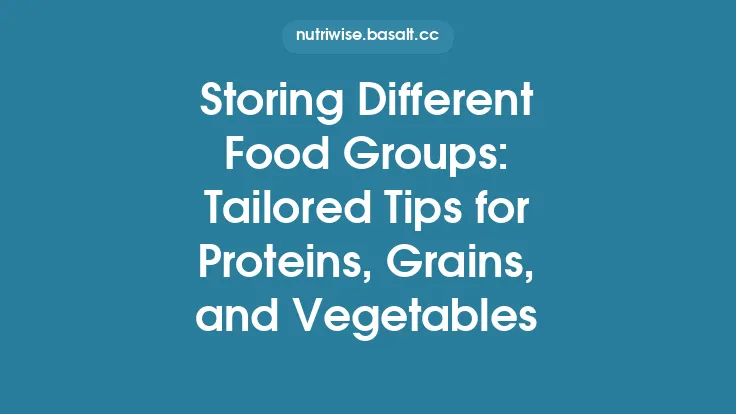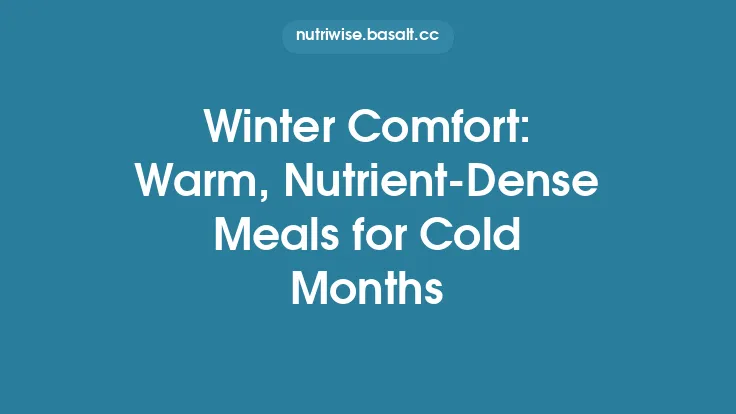Sautéing is one of the most versatile cooking methods in the kitchen, allowing vegetables, proteins, and aromatics to develop deep, caramelized flavors in a matter of minutes. When the goal is to keep dishes light while still delivering richness, mastering low‑fat sautéing becomes essential. By understanding the science of heat transfer, the role of moisture, and the strategic use of seasonings, you can create meals that are both satisfying and health‑conscious without relying on generous amounts of oil.
Understanding the Role of Fat in Sautéing
Fat serves several functions in traditional sautéing: it conducts heat, prevents sticking, and carries fat‑soluble flavor compounds. In a low‑fat approach, you replace some of these functions with alternative techniques:
| Traditional Role | Low‑Fat Alternative |
|---|---|
| Heat conduction | Pre‑heated pan, thin oil layer, or a small amount of broth/water |
| Anti‑sticking | Proper pan temperature, dry‑patting ingredients, using a well‑seasoned surface |
| Flavor carrier | Deglazing, adding aromatics, finishing with acid or herbs |
By recognizing that fat is not the sole carrier of flavor, you can strategically substitute or reduce it while still achieving the desired taste and texture.
Choosing the Right Pan for Low‑Fat Sautéing
While non‑stick surfaces are often touted for low‑fat cooking, a well‑seasoned stainless steel or carbon steel pan can be equally effective when used correctly. These pans develop a natural patina that reduces sticking and enhances the Maillard reaction—a chemical process that creates the browned, savory notes we associate with sautéed foods.
Key considerations:
- Thickness: A pan with a 3‑mm base distributes heat evenly, minimizing hot spots that can cause burning.
- Surface Condition: A lightly seasoned surface (a thin film of polymerized oil) provides a natural release layer.
- Size: Choose a pan that allows a single layer of food; overcrowding traps steam and leads to steaming rather than sautéing.
Preparing Ingredients for Optimal Sauté
Dry the Ingredients
Moisture on the surface of vegetables or proteins creates steam, which interferes with browning. Pat items dry with paper towels or a clean kitchen cloth before they hit the pan. For leafy greens, use a salad spinner to remove excess water.
Uniform Cutting
Consistent size ensures even cooking. Smaller pieces caramelize faster, while larger pieces retain moisture longer, allowing you to control the degree of browning across the dish.
Pre‑Seasoning
A light dusting of salt or a spice blend before cooking can draw out surface moisture, which then evaporates, leaving a drier surface ready for browning. This technique is especially useful for mushrooms and eggplant.
Mastering the Heat: Temperature Control
Low‑fat sautéing hinges on precise temperature management:
- Pre‑heat the Pan: Allow the pan to reach the desired temperature before adding any liquid. A simple test is to sprinkle a few drops of water; they should sizzle and evaporate immediately.
- Add a Minimal Fat Layer: Use a teaspoon (5 ml) of oil, butter, or a combination of both. Swirl to coat the surface thinly. For an oil‑free start, add a splash (≈15 ml) of broth or water to create a thin steam layer that prevents sticking while the pan heats.
- Adjust as Needed: If food begins to stick, increase the heat slightly or add a few more drops of liquid. Conversely, if browning occurs too quickly, lower the temperature to avoid burning.
Techniques to Reduce Oil Without Sacrificing Flavor
The “Dry‑Sear” Method
Begin by heating a dry pan over medium‑high heat. Add the protein or vegetable and let it sit undisturbed for 30–60 seconds. The natural moisture released will create a thin steam layer, allowing the surface to brown. Once a crust forms, you can add a small amount of oil or liquid to deglaze.
Deglazing for Flavor
After the initial browning, a splash of acidic liquid (wine, lemon juice, or vinegar) or a low‑sodium broth can loosen the fond—the caramelized bits stuck to the pan. This not only prevents burning but also creates a flavorful base for a quick sauce without additional fat.
Finishing with Aromatics and Acids
Add minced garlic, ginger, fresh herbs, or citrus zest in the final minute of cooking. Their volatile oils release quickly, imparting intense flavor without the need for extra oil. A drizzle of a high‑quality vinegar or a squeeze of lemon at the end brightens the dish and balances any residual richness.
Building Layers of Flavor
Low‑fat sautéing thrives on layering:
- Base Layer: Start with aromatics such as onions, shallots, or leeks sautéed in a minimal amount of oil or water until translucent.
- Main Ingredient: Introduce the primary vegetable or protein, allowing it to develop a golden crust.
- Secondary Add‑Ins: Add quicker‑cooking items (e.g., spinach, cherry tomatoes) toward the end to preserve texture.
- Sauce or Glaze: Finish with a quick reduction of broth, wine, or a splash of soy sauce, thickened with a small amount of cornstarch if desired.
- Finish: Sprinkle fresh herbs, toasted nuts, or a pinch of sea salt for texture and depth.
Practical Low‑Fat Sauté Recipes
1. Garlic‑Lemon Sautéed Shrimp
- Ingredients: 200 g peeled shrimp, 1 tsp olive oil, 2 cloves minced garlic, juice of ½ lemon, pinch of red‑pepper flakes, fresh parsley.
- Method: Heat pan, add oil, swirl, then add shrimp in a single layer. Cook 1 min per side, add garlic and pepper flakes, sauté 30 seconds, deglaze with lemon juice, finish with parsley.
2. Herb‑Infused Sautéed Zucchini
- Ingredients: 2 medium zucchinis, sliced into half‑rounds, 1 tsp butter, ¼ cup low‑sodium vegetable broth, 1 tsp dried thyme, fresh basil.
- Method: Pre‑heat pan, melt butter, add zucchini, let sit 45 seconds, stir, add broth and thyme, cover briefly to steam, uncover, let liquid evaporate, finish with torn basil.
3. Spicy Chickpea and Bell Pepper Mix
- Ingredients: 1 can chickpeas (drained, rinsed), 1 red bell pepper (julienned), 1 tsp sesame oil, 1 tsp soy sauce, ½ tsp smoked paprika, 1 tsp rice vinegar.
- Method: Heat pan, add sesame oil, toss in bell pepper, sauté 2 minutes, add chickpeas, sprinkle paprika, stir, splash soy sauce and vinegar, cook until lightly crisped.
These examples illustrate how a teaspoon of fat, combined with strategic moisture and seasoning, yields dishes that are both light and richly flavored.
Troubleshooting Common Issues
| Problem | Likely Cause | Solution |
|---|---|---|
| Food sticks to the pan | Pan not hot enough; insufficient oil or moisture | Allow pan to pre‑heat fully; add a thin layer of oil or a splash of broth |
| Ingredients burn quickly | Heat too high; too little liquid | Reduce temperature; add a few drops of water or broth to create steam |
| Lack of browning | Overcrowding; excess moisture | Cook in batches; pat ingredients dry before adding |
| Bland flavor | Insufficient seasoning; missing acid | Season throughout cooking; finish with a splash of citrus or vinegar |
Health Benefits of Low‑Fat Sautéing
- Reduced Caloric Density: Cutting oil by half can lower a dish’s calorie count by 100–200 kcal per serving.
- Preserved Nutrients: Quick, high‑heat cooking retains water‑soluble vitamins (e.g., vitamin C) better than prolonged simmering.
- Improved Satiety: The Maillard reaction creates complex flavor compounds that satisfy the palate, reducing the urge for additional high‑fat condiments.
Tips for Incorporating Low‑Fat Sautéing into Everyday Meals
- Batch Prep: Sauté a mix of vegetables at the start of the week; store in airtight containers for quick stir‑ins to salads, wraps, or grain bowls.
- Swap Out Heavy Sauces: Use a deglazed pan liquid as a base for dressings or light gravies.
- Combine Techniques: Pair sautéed components with other low‑fat methods (e.g., steaming a side) for balanced meals.
- Mindful Portioning: Even with reduced oil, keep an eye on portion sizes of high‑calorie ingredients like nuts or cheese used as finishes.
Final Thoughts
Low‑fat sautéing is not about sacrificing flavor; it is about harnessing the chemistry of heat, moisture, and seasonings to create dishes that are both light and deeply satisfying. By selecting the right pan, mastering temperature control, preparing ingredients thoughtfully, and employing strategic deglazing and finishing touches, you can transform everyday meals into vibrant, health‑forward creations. Embrace these techniques, experiment with your favorite ingredients, and enjoy the delicious results of a smarter, lighter sauté.
